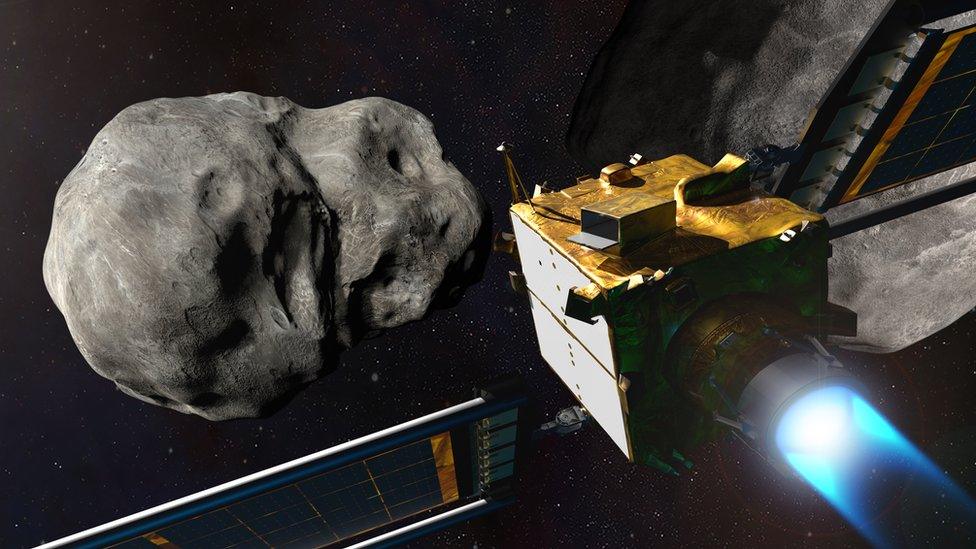Space: Check out these stunning images of our galaxy from Nasa!
- Published
- comments
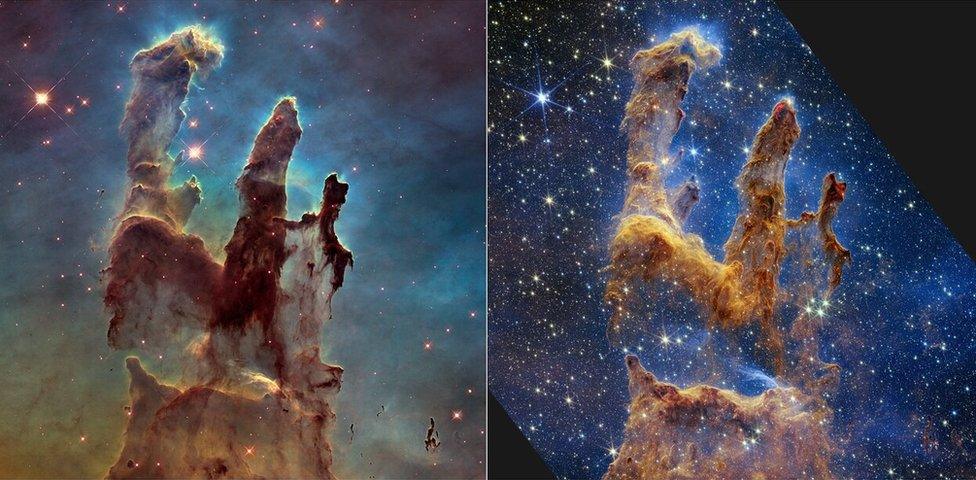
The new telescope's infrared detectors can see past more of the pillars' dust. On the left is an image taken by the Hubble telescope in 1995 and on the right is the latest image taken by the James Webb telescope in 2022
Here at Newsround, we can never get enough of the amazing pictures of our galaxy - and Nasa have recently revealed two more.
One image - which shows a time lapse of our sky - has been 12 years in the making!
The other is from the James Webb telescope and captures the famous "Pillars of Creation" in a way we've not really seen before.
It's hoped the pictures will provide more detail for researchers to help them understand all about the universe.
Nasa telescope 12-year time lapse
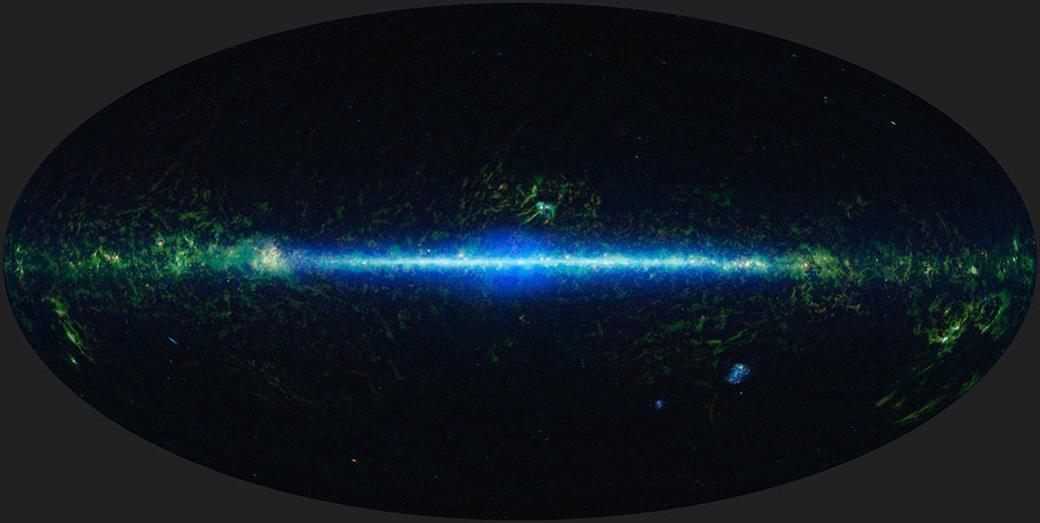
This time-lapse is made up of images from the entire sky taken by the Wide-field Infrared Survey Explorer
Every six months Nasa's space telescope call the Near-Earth Object Wide Field Infrared Survey Explorer - otherwise known as NEOWISE - takes images in all directions as it orbits earth and we travel around the Sun.
When they put all of these pictures together, they can create an 'all-sky' map which shows a lot more than we can see with the naked eye.
That's because NEOWISE is sensitive to infrared light which is radiated by things like stars.
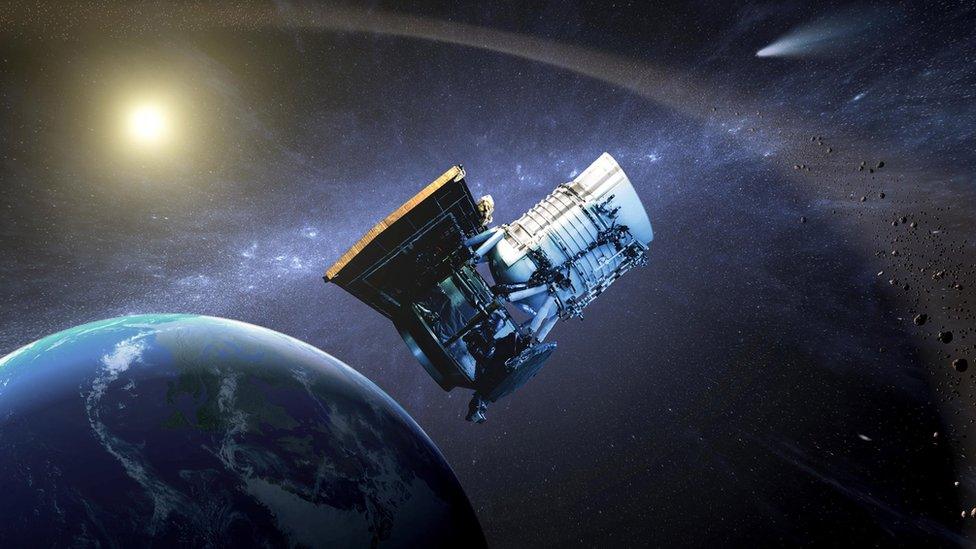
This illustration shows what the NEOWISE spacecraft looks like orbiting the Earth
When these images are put into a time-lapse it reveals changes in the sky over the past decade.
Researchers can then use this to see how distant objects have moved or changed over time - which helps scientists understand more about black holes and how stars form.
The 'Pillars of Creation'
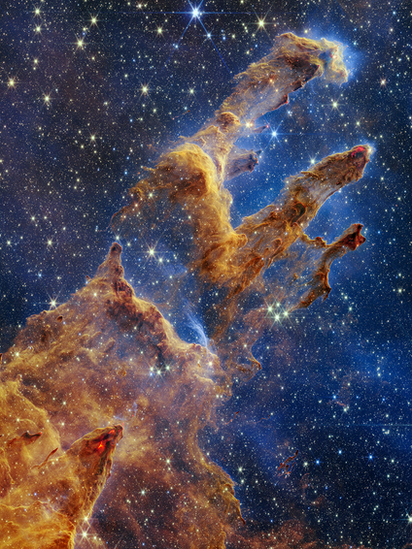
New stars are formed in the so-called 'Pillars of Creation'
The so-called "Pillars of Creation" are cool, dense clouds of hydrogen gas and dust far, far away from Earth - around 6,500 light-years to be precise
Here, new stars are formed - they are the bright red bits you can see in the image - and these ones are thought to only be a few hundred thousand years old.
Sounds old right? But that's actually really young for stars!
When we see images of the Pillars of Creation like this, we're technically looking into the past.
The light that the telescope detects has taken 6,500 years to reach it!
Every large telescope - including the Hubble telescope - has captured this scene and now it's the turn of the huge James Webb telescope.
This telescope can also detect infrared, which means this image shows much more than we've ever seen - including the activity of these new-born suns!
What do you think of the pictures? Let us know in the comments below!
- Published17 October 2022
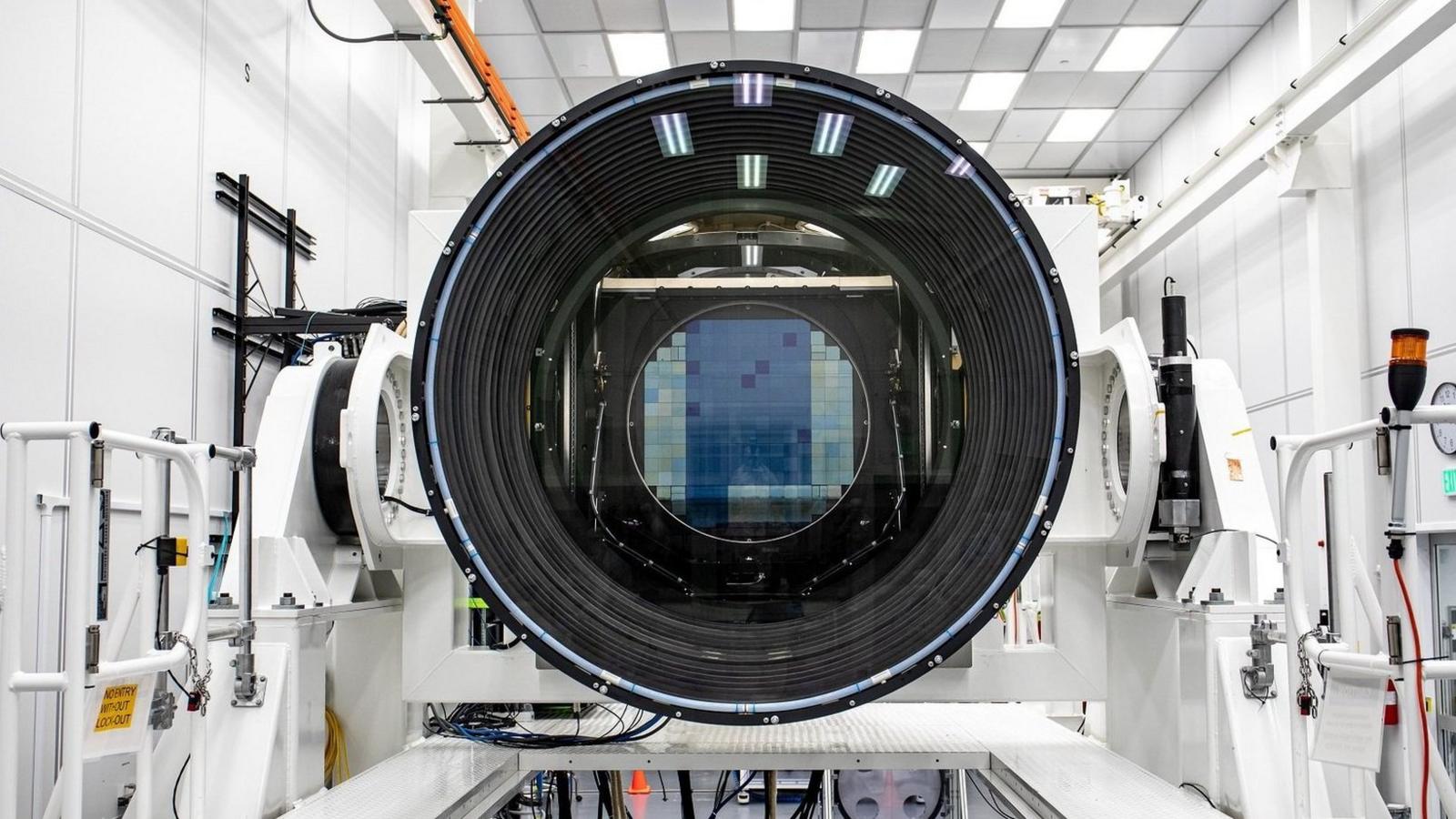
- Published13 October 2022
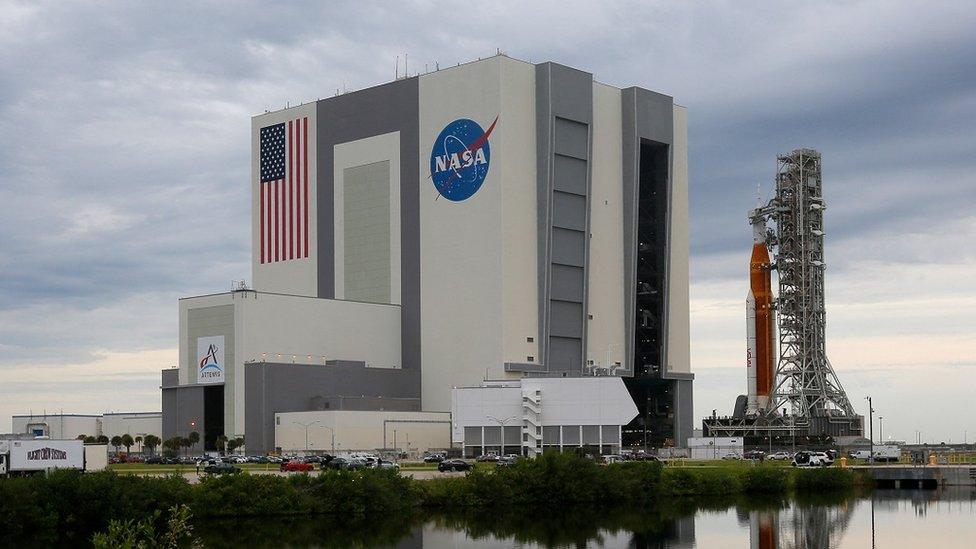
- Published12 October 2022
